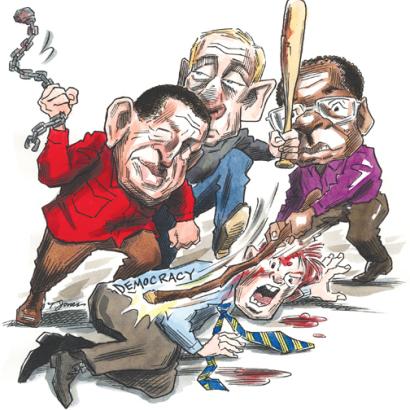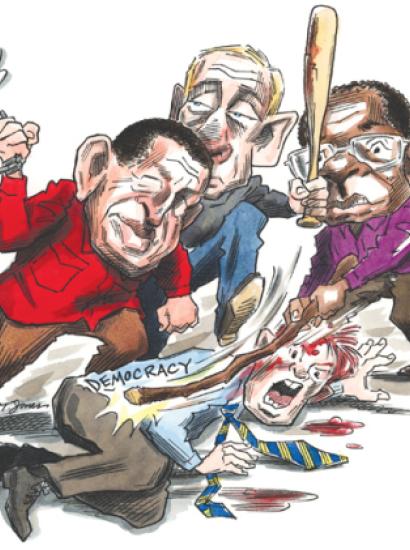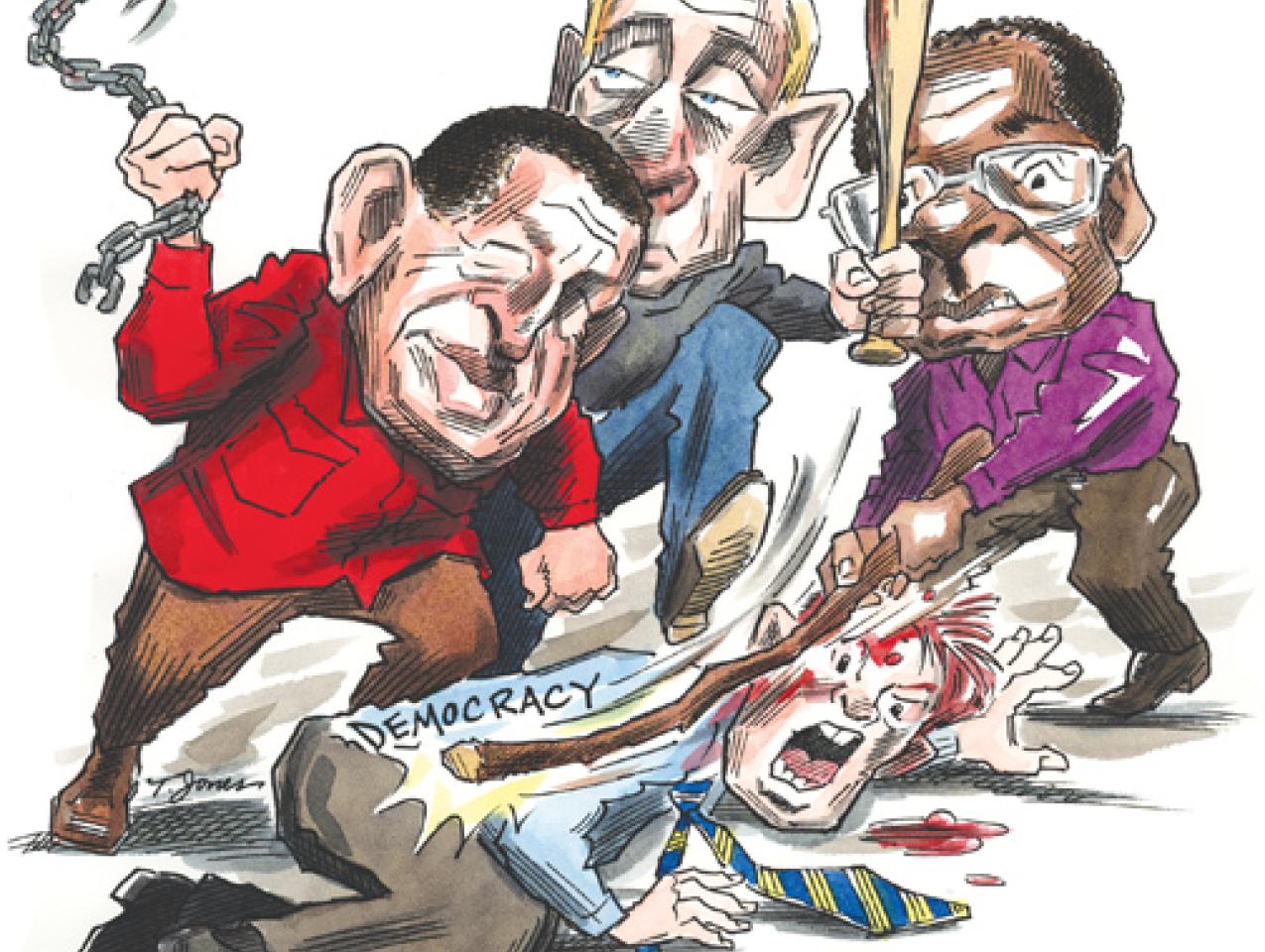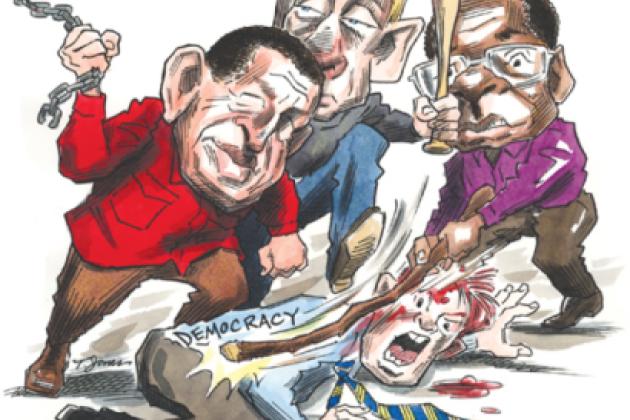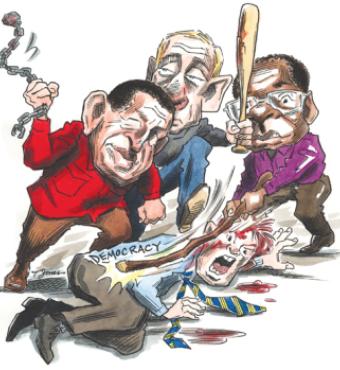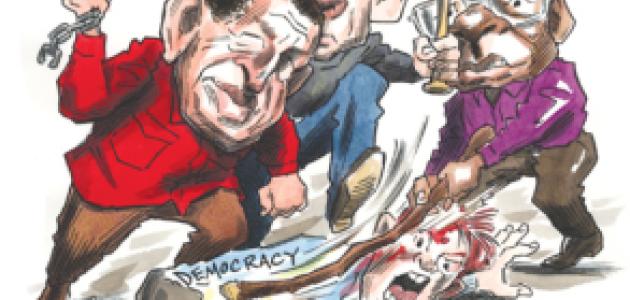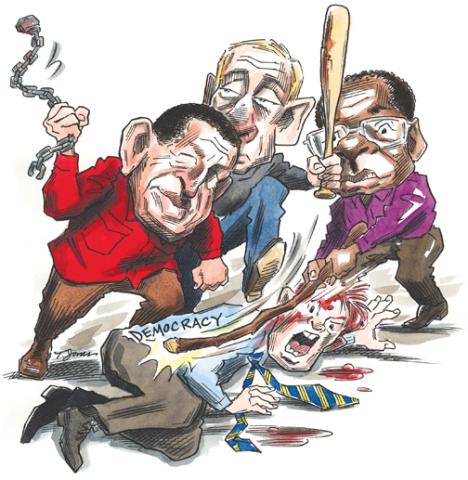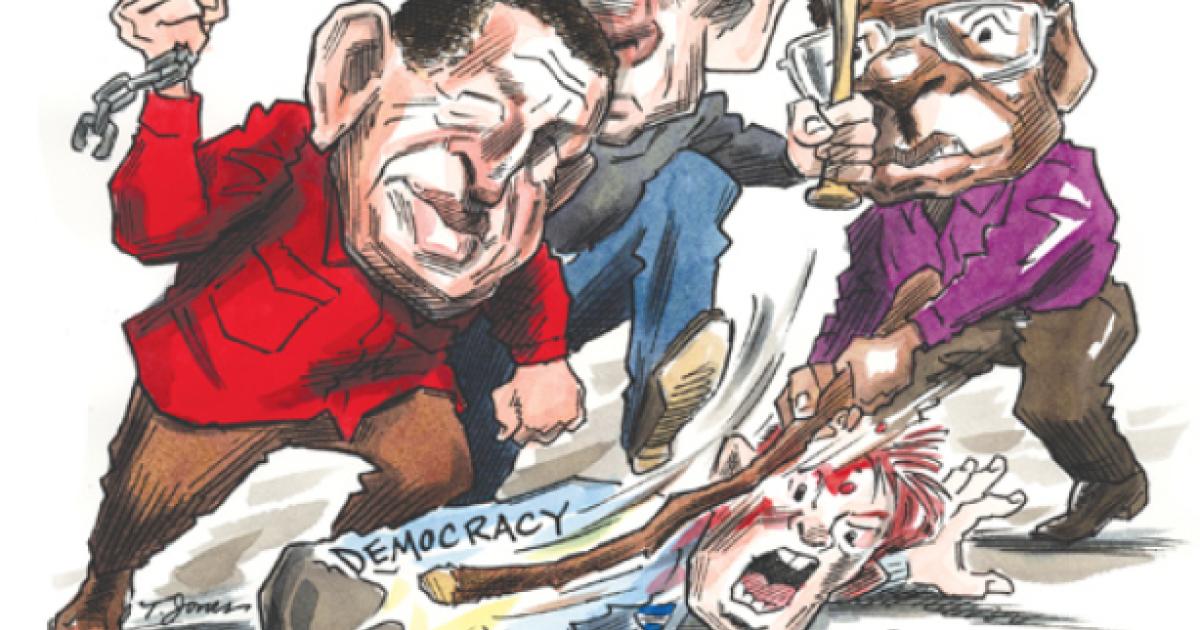- Economics
- US Labor Market
- Energy & Environment
- International Affairs
- US Foreign Policy
- US
- Contemporary
- Economic
- History
H. L. Mencken once wrote that “democracy is only a dream: it should be put in the same category as Arcadia, Santa Claus and heaven.”
Anyone who follows Larry Diamond’s global quest for democracy is tempted to reckon that Mencken may have been right. It’s painfully obvious that many countries have gone cruelly backward in the past decade— Vladimir Putin’s Russia, for example, or Zimbabwe or Pakistan.
Diamond is a meticulous social scientist whose most recent take on the world, The Spirit of Democracy: The Struggle to Build Free Societies throughout the World, has him leaping from Malawi to Singapore to Venezuela. He looks at countries that broke down after the post-1974 “third wave” of democracy and have yet to recover, not only obvious examples like corruption- ridden Nigeria but also Nepal, Thailand, and the Solomon Islands. He studies what he calls “the pathology of personal rule” in Africa, along with the role of monarchy, populism, and Islam in the Middle East.
Diamond is anything but pessimistic: he believes that most of the world, one way or another, can move toward democracy. “By the mid-1990s,” he explains, “it had become clear to me, as it had to many of my colleagues involved in the global struggle for democracy, that if some three-fifths of the world’s states (many of them poor and non-Western) could become democracies, there was no intrinsic reason why the rest of the world could not do so as well.” He even throws countries such as China and Iran into this equation.
Diamond can be optimistic because he compares the present, with all of its setbacks, to 1974, when he was a student leader during the protests against the Vietnam War. In those days, he reminds us, democracy was not the way of the world. “Barely a quarter of independent states chose their governments through competitive, free, and fair elections.” There were Marxist and nationalist insurgencies in Asia and Africa. Haile Selassie was soon to fall in Ethiopia, which, Diamond notes, would leave “almost all of sub-Saharan Africa . . . under military or one-party rule.” There was repressive military rule in Latin America, including Chile, where the military had overthrown the democratically elected Allende government. Totalitarianism had the Soviet Union and the Eastern European satellite states in a viselike grip. Elsewhere, havoc prevailed. The Khmer Rouge would soon take over in Cambodia and ultimately be responsible for the death of an estimated 1 million to 2 million people (out of a total population of 7 million). In the Arab world, only Lebanon was a democracy.
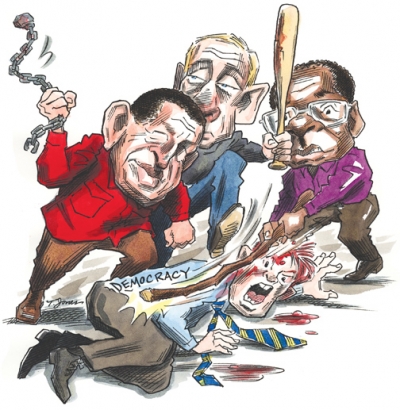
The U.S. government, meanwhile, was obsessed with the Cold War struggle against communist expansion and was disengaging from a war in Southeast Asia that had cost the lives of 58,000 of its citizens, as well as several million Vietnamese.
At that time, Diamond set out on a journey to see where changes were occurring, both good and bad. His first stop was Portugal. A few months earlier, the Movement of the Armed Forces had overthrown a nearly 50- year-old dictatorship; that is, a military coup had overthrown a quasi-fascist dictatorship. Diamond watched as communist and other political forces tried to thrash out a new government.
Then he moved south to Nigeria, Africa’s biggest and most promising democracy. It was, however, “a country in an economic and political fever,” flush with oil but broken down from the brutal Biafra conflict.
From Africa, Diamond went on to the Middle East, to Egypt and Israel, each emerging from the trauma of the 1973 war. Next it was Thailand, “trying to find its footing,” and Taiwan, which he calls “one of the key authoritarian states in the East Asian miracle.”
In a sense, that expansive journey inspired Diamond’s life work. What he gleaned from his experience was the theory that the fate of democracy was not driven by historical events or even structural forces but by the passion and zeal of individual people. “It is a consequence of struggle, strategy, ingenuity, vision, courage,” he notes, explaining that the places where democracy worked took genuine commitment, talent, nerve, and the obvious passion for freedom—“politics in the best sense of the word.”
As an example, he cites Serbia’s extraordinary “bulldozer” revolution in October 2000, in which a democratic alliance of opposition parties, a group of students armed with cell phones, and a bunch of farmers riding tractors into Belgrade managed to mobilize a million people for peaceful resistance. They toppled Slobodan Milosevic’s iron-fisted rule—something the inefficient politicians were unable to do throughout a decade of brutal wars and economic breakdown. That peaceful revolution became a model throughout the region, most notably in Georgia and Ukraine.
But, Diamond asks, is democracy something that can exist only in rich and educated countries, those with a strong middle class? Do all people actually want democracy, or do some—the Chinese perhaps—believe that some form of authoritarianism is the best way to run a country?
To answer this question, Diamond continues to examine the forces that contribute to democracy, from the internal influences that give rise to civil societies to the impact of peaceful outside pressures such as diplomatic persuasion or, in some cases, economic sanctions. He highlights the work of the National Endowment for Democracy, founded in 1983 to promote democracy abroad, and the democratic assistance it successfully provided to Poland and Nicaragua.
Diamond points to how ordinary people affect the democratic process, such as Alejandro Toledo, the former Peruvian leader, who worked his way up from tending sheep and pigs as an “Indian rebellious of poverty” to become an ambitious and idealistic president. Toledo’s five-year term was not a success politically, but Diamond views it as a lesson to indicate what might work in Latin America.
In China and throughout Africa, he sees democratic leaders and idealistic individuals bravely seeking change. Similarly, in Russia, a place where he believes democracy has strikingly receded since the days of Boris Yeltsin, he points to courageous journalists such as Anna Politkovskaya, murdered for attempting to write the truth. Oil is a major part of the story of Russia’s democratic retreat, as it is for many other nations. None of the twentythree countries whose economies are dominated by what Diamond calls “the exceptional curse of oil” are democracies. From Algeria to Venezuela, he chillingly reminds us, “all of the oil-rich countries of the world remained under or returned to authoritarian rule after 1974 and the third wave of democratization.” When oil revenues surge, democracy declines.
Diamond’s work offers well-grounded support to anyone who has questioned the long-held theory of the late Hoover fellow Seymour Martin Lipset that the richer the country, the greater the chances of sustaining democracy.
Third World countries are not destined to lurch from dictator to dictator, Diamond insists. Even places such as Burundi and Sierra Leone, he points out, became democracies after the brutality and violence of bloody civil wars (although they are vulnerable to risk). Democracy may be a luxury, but it isn’t a question of wealth. It all comes down to the energy and commitment of people.
Diamond makes the hopeful prediction that even “countries like Iran and China, which now seem so immune to the global democratic trend, stand a very good chance of becoming democratic in the next two to three decades.”
“And if China can democratize,” Diamond asks, “why not the entire world?”








